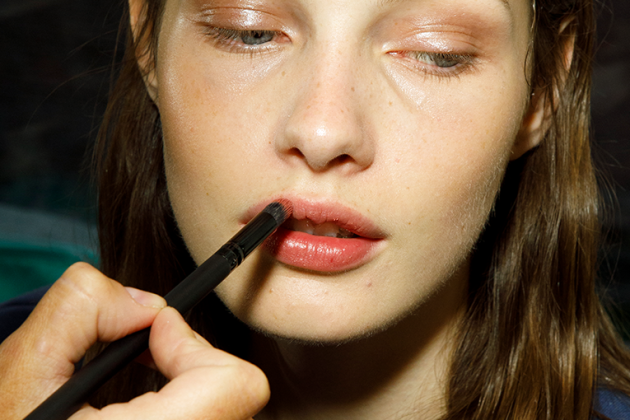What to Watch: Glam Teams Left Vulnerable Post Hollywood Strike

The Hollywood actors and writers struck deals with the studios, receiving compensation increases. But where does that leave everyone else? The industry was quick to get back to work, but the glam teams — hairstylists and makeup artists — are left vulnerable.
“It’s so insulting now that they’ve cut our rates to one-tenth of what it used to be,” claimed makeup artist Matin Maulawizada.
More from WWD
More in What to Watch: Eye
Hollywood Awards Season Red Carpet Pileup
Fashion’s Must-see Streaming TV
Glam Teams Left Vulnerable Post Hollywood Strike
Museum Exhibition Highlights Gems in Time for Awards Season
The Fashion Stylists Behind 2024’s Awards Season Leading Men
Among the most vocal on social media, Maulawizada is behind Beauty4Beauty, started during the strike as a call for brands to hire professional artists for partnerships on social media and beyond. The initiative was created with Lashify founder Sahara Lotti and Ellen Maguire of Coterie Global. Early on Lashify committed $20,000 to the cause, while Bioeffect followed with $15,000 and Iles Formula put in $3,000. More brands have joined since.
Fifteen years ago, day rates with a film star were between $3,500 and $5,000, Maulawizada explained. He’s worked with the likes of Angelina Jolie, Jessica Chastain, Sarah Jessica Parker, Kristin Davis and Cynthia Nixon.
“But you didn’t work those rates every single day,” he went on. “You got it two, three days a month. And then the rest of it was normal TV rates. And then you booked a commercial here and there.”
TV rates were much lower. After taxes, agent fees, etc., the final check for TV gigs would be $416.66, Maulawizada said. “I always laughed at that weird number. Now those rates are literally gone.”
One makeup artist, who wished to remain anonymous, said the sum could be as high as “10 grand for the day doing someone’s makeup.” In comparison, these days the rates are as low as $325 for a similar job. And that’s for a 10-hour work day for a union artist.
“We don’t have a unified voice,” Maulawizada said.
While some can turn to the International Alliance of Theatrical Stage Employees, which represents more than 170,000 behind-the-scenes entertainment workers, freelancers are left on their own.
“I was on a group text for a while that a bunch of artists got together and were trying to unionize,” said Los Angeles-based makeup artist Jamie Greenberg, who counts Kaley Cuoco and Chelsea Handler as clients. “But everyone did a bunch of research and realized that it was close to impossible.”
During the strike, Greenberg focused on commercial work, social media partnerships and her indie beauty brand Jamie Makeup. She also runs Swag Bag, a beauty subscription service with nearly 400 subscribers.
“We don’t have a union to protect us,” Greenberg said. “It just feels like we’re so replaceable and nobody cares.”
The shift happened around the time streaming services were coming up.
“We know, ‘Oh, HBO has good rates, oh, Netflix has s–tty rates. Television makes less than movies, and commercials make more than anything,’” said the anonymous makeup artist.
Day rates used to be “in the thousands. And now, if it’s a Netflix job or something they’re claiming that their revenue is lower so their budget’s lower and, you know, we’re getting rates of like $500 or something before tax,” said an anonymous hairstylist. “They’re claiming they’re not making as much in revenue, even though we see that they are making all this money. They’re claiming that their budgets are lower.”
Many have been shifting their focus to other industries.
“They say there’s no money in acting,” the hairstylist continued. “We’re leaning more into these jobs with music and fashion. Unless you’re at Marvel level, the money is more in fashion and music.”
“We’re kind of like the forgotten backend of things,” Greenberg added.
On the red carpet, glam has become advertising. As the award season approaches, kicking off with the Golden Globes on Sunday, more brands will pay stars and artists as ambassadors to use and publicize its goods. It’s commercial work — where the money is.
Best of WWD
